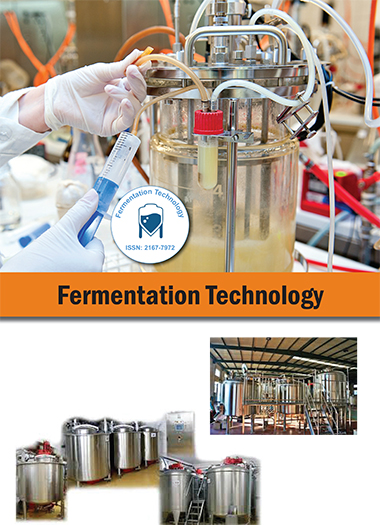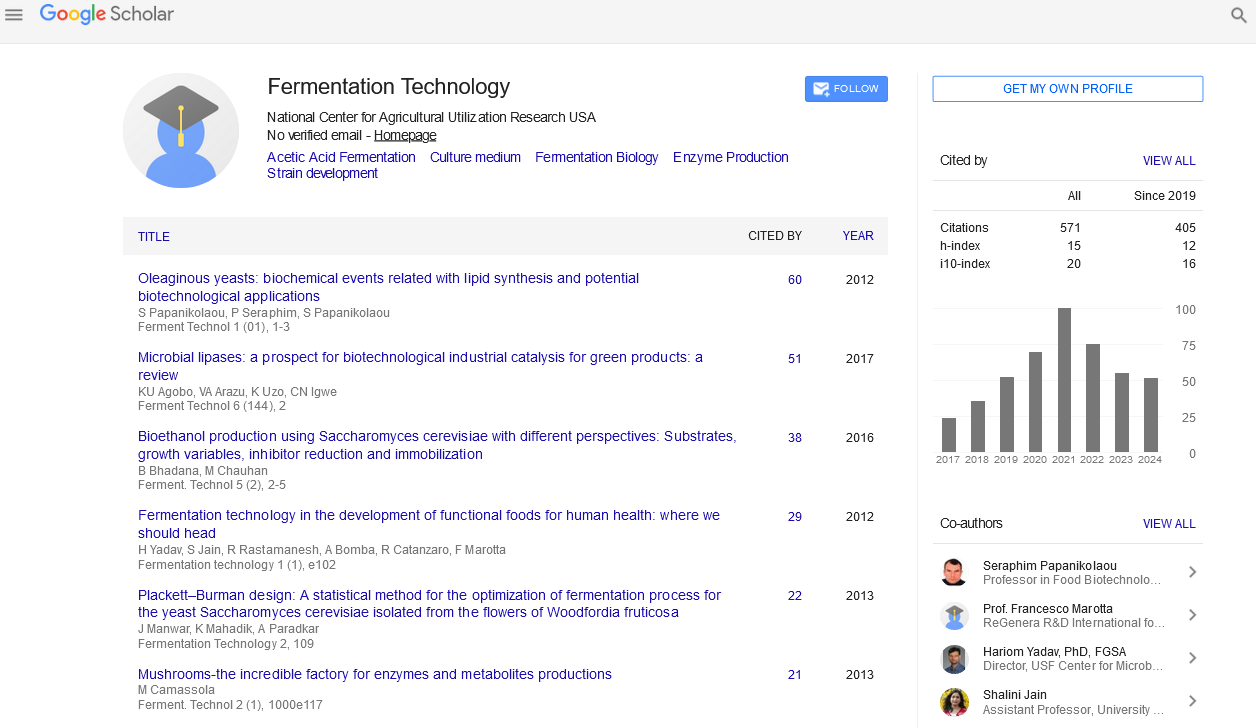Indexed In
- Open J Gate
- Genamics JournalSeek
- Access to Global Online Research in Agriculture (AGORA)
- RefSeek
- Hamdard University
- EBSCO A-Z
- OCLC- WorldCat
- Publons
Useful Links
Share This Page
Journal Flyer

Open Access Journals
- Agri and Aquaculture
- Biochemistry
- Bioinformatics & Systems Biology
- Business & Management
- Chemistry
- Clinical Sciences
- Engineering
- Food & Nutrition
- General Science
- Genetics & Molecular Biology
- Immunology & Microbiology
- Medical Sciences
- Neuroscience & Psychology
- Nursing & Health Care
- Pharmaceutical Sciences
Abstract
Future of Stable Fermentation and Role of Next Generation Bio-sensors
Abu Feyisa*, Mesfin Tafesse, Musin Kelel and Gesesse Kebede
The objective of a bioprocess is to bring about particular chemical and/or physical changes in biochemical materials generated from the medium. Typically, a bioprocess will require fully functional live cells or enzymes as the biocatalyst. The possibility of unfavorable cell heterogeneity, which is defined by an increase in the frequency of low producing cells, is common during the scale up of bioprocesses. Low producing cells appear as a result of both genetic and non-genetic variation and will enrich as a result of their faster specific growth rate throughout the prolonged number of cell divisions involved in large scale bio production. The most recent methods for synthetic fermentation stabilization are presented, and it is argued that they should be used to create designs for cell factories that better meet industrial requirements. DNA sequencing information is used to guide strain design for standardized inoculum quality in bioreactors, with cell line screening and improvement by genome editing tools like CRISPR-Cas systems and genotype directed techniques. Furthermore, self-selecting phenotype directed techniques combine high output with cell proliferation, either by rerouting metabolic pathways or enriching for high performing cell variants using synthetic product bio sensing. Early evaluation of production stability in a new cell factory will direct design decisions that reduce variation. Production half-life from standardized serial passage stability screens and production load, measured as the production related percent wise growth rate reduction, serve as good initial measurements. Future cell factories will be far more scalable due to the incorporation of genetic designs that can maintain a high level of output over an extended period of time. Automated bioreactors are currently the most advanced bioreactors for longterm fermentation processes (automated stirred-tank and DASbox mini bioreactors: Parallel process development). Additionally, the use of next-generation biosensors for real-time particle monitoring, image processing, and imaging to monitor fermentation processes has made it possible for stable fermentation in this century.
Published Date: 2023-05-24; Received Date: 2023-03-09

